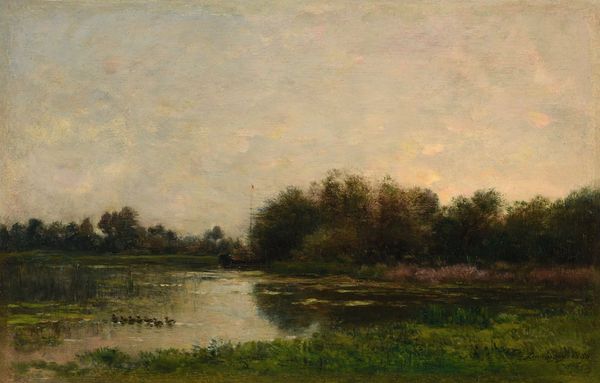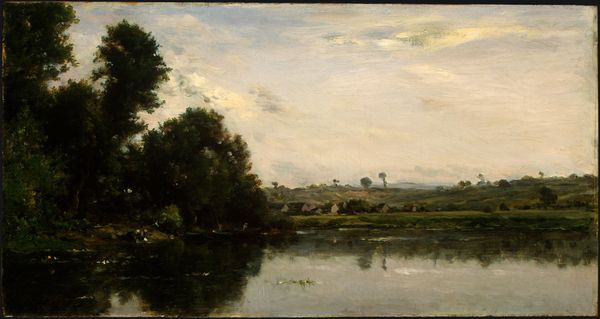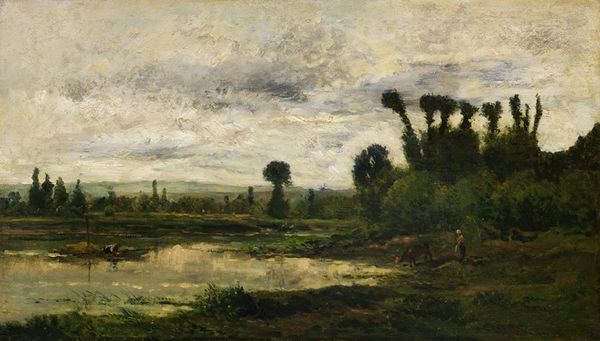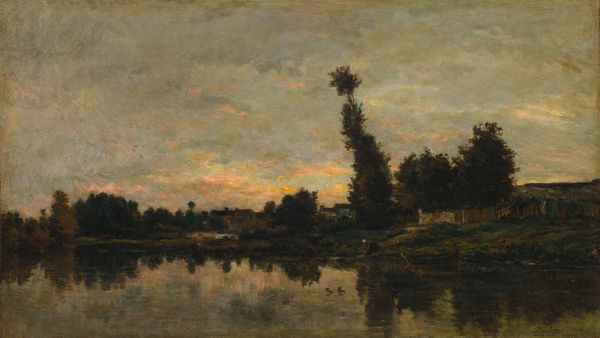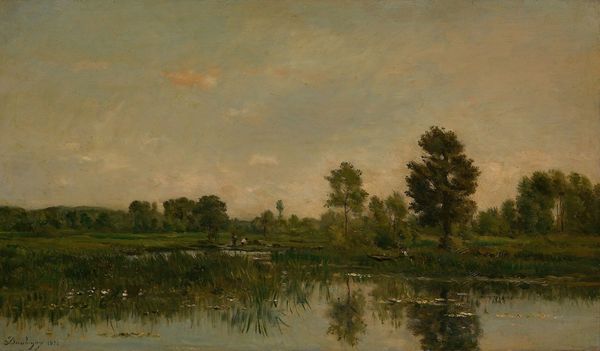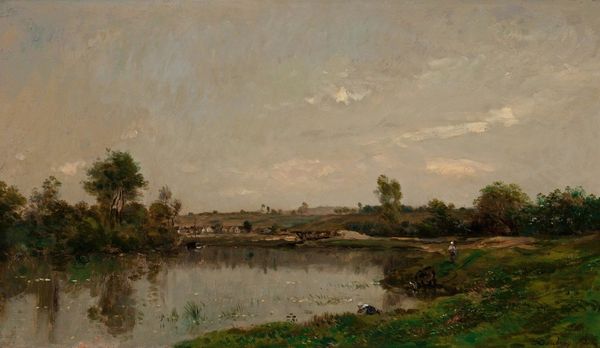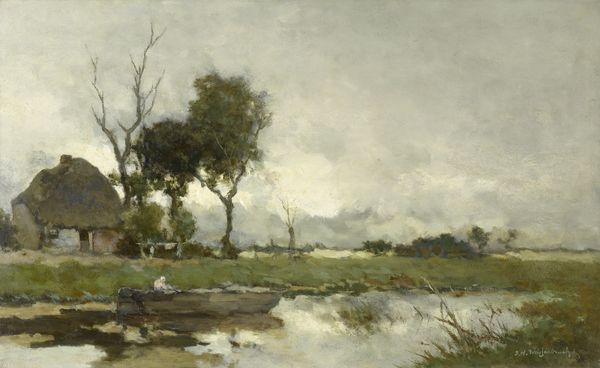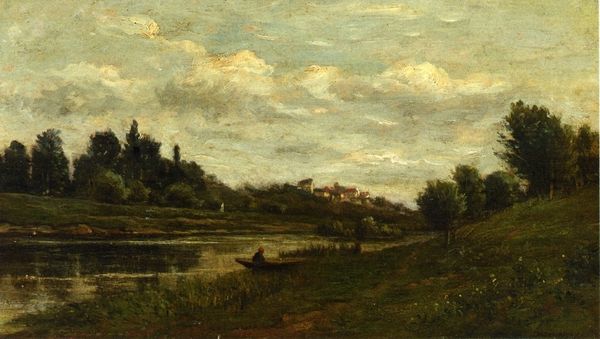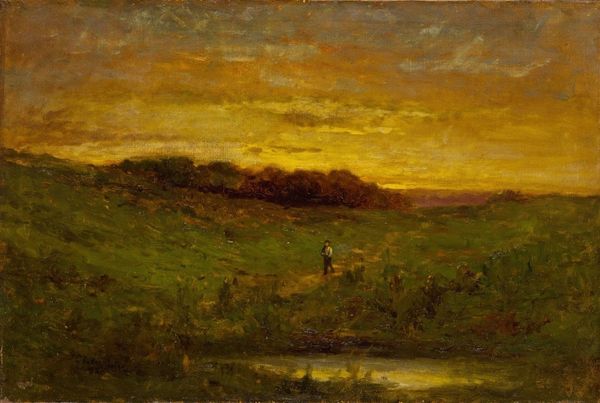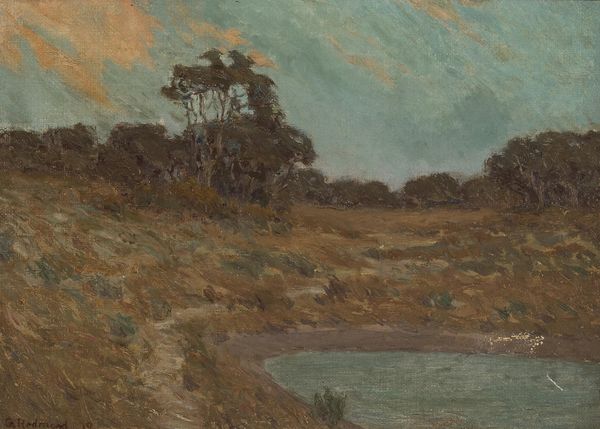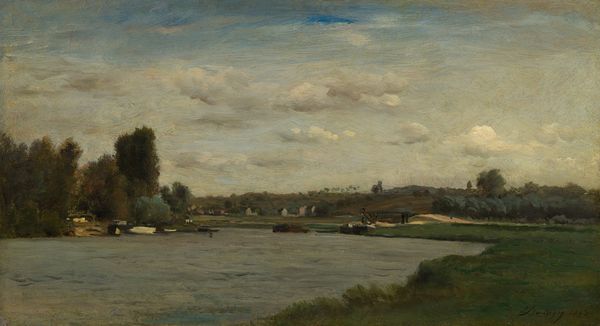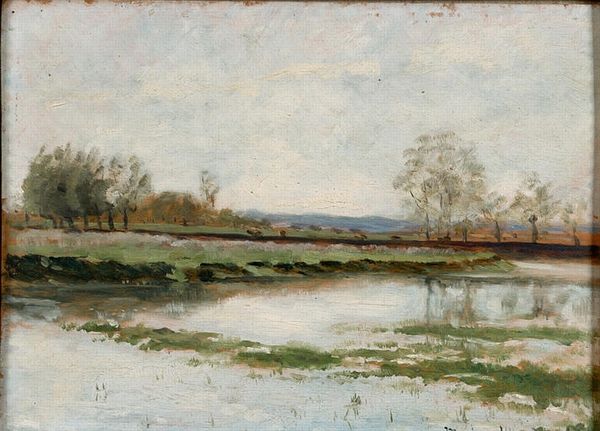
painting, plein-air, oil-paint
#
painting
#
impressionism
#
plein-air
#
oil-paint
#
landscape
#
impressionist landscape
#
nature
#
oil painting
#
romanticism
#
genre-painting
#
nature
#
watercolor
Copyright: Public Domain: Artvee
Curator: Let's discuss this oil-on-canvas work titled "Étang d’Optevoz" by Charles-François Daubigny. Editor: It’s remarkably subdued; the tones are muted, almost monochromatic, and yet the handling of light on the water creates a captivating, placid effect. Curator: Daubigny was an important figure in the development of plein-air painting; the application of the work on-site is quite evident. It embodies the movement away from the studio and into engagement with everyday locations. The scale of rural labor, and relationship with leisure activity are important here, as they relate to artistic and rural economies. Editor: I am struck by how Daubigny's careful construction of light and atmosphere evokes a unique experience of place. See how he masterfully balances the sky and the landscape, which guides the viewer's gaze. Curator: Yes, and in his process Daubigny prefigures much Impressionist working methodology; what might seem like a scene captured with fidelity also exposes Daubigny’s labor and technique—the work has a hand-made quality that points us towards it’s materiality. Editor: And that tension contributes to the composition's overall effect; Daubigny achieves a stunning harmony through understated brushwork. It’s a beautifully constructed space—very satisfying to observe. Curator: It certainly is compelling. Exploring Daubigny's engagement with nature and the emerging styles, really emphasizes the historical context and artistic innovation. Editor: And, personally, the understated tonal palette and composition make it incredibly beautiful, despite its seemingly quiet presence.
Comments
No comments
Be the first to comment and join the conversation on the ultimate creative platform.
